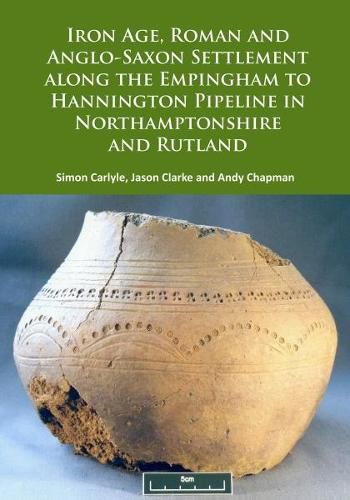Readings Newsletter
Become a Readings Member to make your shopping experience even easier.
Sign in or sign up for free!
You’re not far away from qualifying for FREE standard shipping within Australia
You’ve qualified for FREE standard shipping within Australia
The cart is loading…






Between January 2008 and July 2009, Northamptonshire Archaeology, now part of MOLA (Museum of London Archaeology), carried out a series of excavations along the route of a new water pipeline being constructed by Anglian Water Services as part of a major project to increase the supply of water to new homes and businesses in the south-east Midlands region. Nineteen sites were investigated, dating primarily to the Iron Age, Roman and Anglo-Saxon periods. The earliest remains were a late Bronze Age/early Iron Age pit alignment near Seaton, Rutland. The Iron Age and Roman sites were small rural settlements comprising ditched enclosures, the remains of roundhouses and pits. Settlements were located near Seaton and Caldecott in Rutland and in Northamptonshire at Swinawe Barn near Corby, Thorpe Malsor, White Hill Lodge, Great Cransley and Willows Nursery. A Roman site near Rushton, Northamptonshire may be associated with a villa estate. Other sites included part of a Roman field system at Violet Lane, near Corby, and Roman cremation burials near Gretton, Northamptonshire. The settlements mainly date from the late middle Iron Age, 2nd century BC, through to the 4th century AD, although there was little evidence for direct continuity of settlement between the Iron Age and Roman periods. An Anglo-Saxon cremation cemetery dated to the late 5th century to mid-7th century AD, at Glaston, Rutland, contained 16 cremation burials deposited in decorated and plain urns along with small assemblages of grave goods, often also burnt on the pyre, and including a brooch, glass beads, and fragments of a bone comb and mount. Later features generally comprised medieval and post-medieval furrows from ridge and furrow field systems and field boundary ditches.
$9.00 standard shipping within Australia
FREE standard shipping within Australia for orders over $100.00
Express & International shipping calculated at checkout
Between January 2008 and July 2009, Northamptonshire Archaeology, now part of MOLA (Museum of London Archaeology), carried out a series of excavations along the route of a new water pipeline being constructed by Anglian Water Services as part of a major project to increase the supply of water to new homes and businesses in the south-east Midlands region. Nineteen sites were investigated, dating primarily to the Iron Age, Roman and Anglo-Saxon periods. The earliest remains were a late Bronze Age/early Iron Age pit alignment near Seaton, Rutland. The Iron Age and Roman sites were small rural settlements comprising ditched enclosures, the remains of roundhouses and pits. Settlements were located near Seaton and Caldecott in Rutland and in Northamptonshire at Swinawe Barn near Corby, Thorpe Malsor, White Hill Lodge, Great Cransley and Willows Nursery. A Roman site near Rushton, Northamptonshire may be associated with a villa estate. Other sites included part of a Roman field system at Violet Lane, near Corby, and Roman cremation burials near Gretton, Northamptonshire. The settlements mainly date from the late middle Iron Age, 2nd century BC, through to the 4th century AD, although there was little evidence for direct continuity of settlement between the Iron Age and Roman periods. An Anglo-Saxon cremation cemetery dated to the late 5th century to mid-7th century AD, at Glaston, Rutland, contained 16 cremation burials deposited in decorated and plain urns along with small assemblages of grave goods, often also burnt on the pyre, and including a brooch, glass beads, and fragments of a bone comb and mount. Later features generally comprised medieval and post-medieval furrows from ridge and furrow field systems and field boundary ditches.